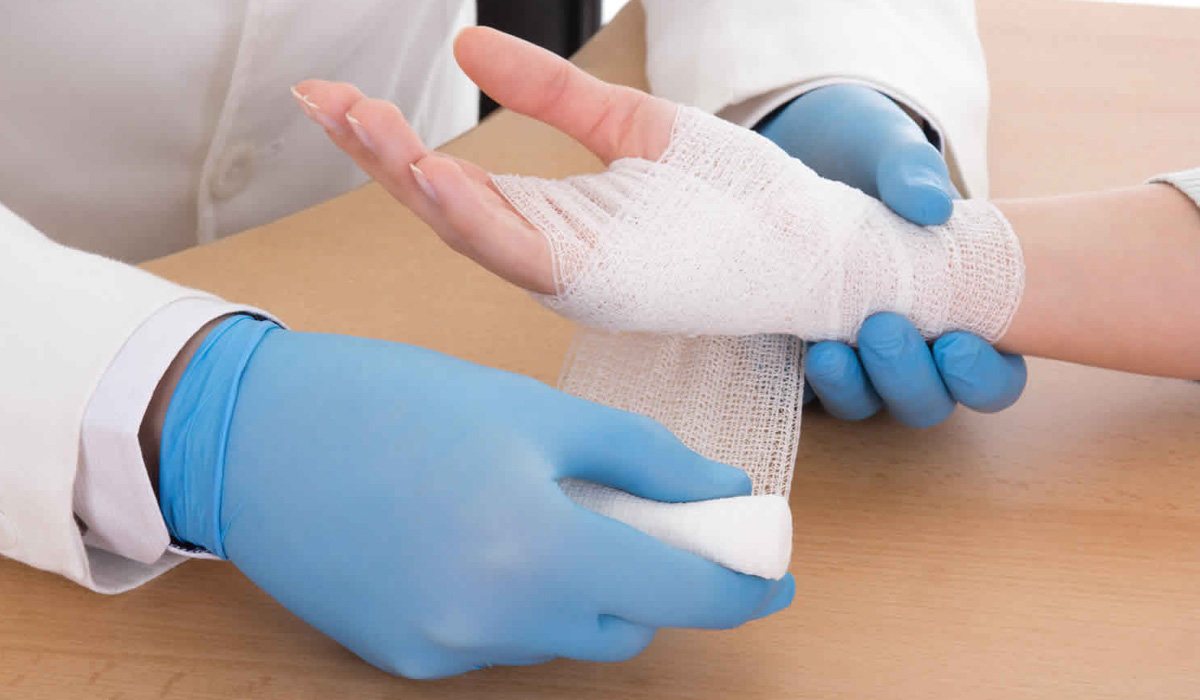Hand burns are extremely common household injuries typically occurring during cooking or baking. When such accidents happen, it’s imperative you understand how to proceed and who to contact. These burns are measured in degrees based on the size and depth, ranging from first- to third-degree burns. Each level of severity requires a different form of care, whether a rinse under water or treatment from a medical professional.
When approaching a hand burn, the first step is to remain calm. You do not want to panic or cause additional stress for the person who has experienced the burn. Next, determine the degree of injury.
A first-degree burn only affects the top layer of skin. The most mild, it leaves the area red and dry with a bit of pain. Immediately remove any clothing or jewelry on the affected area. This may mean rings, bracelets, or shirt sleeves. If these are stuck to the area, don’t pull them off. They may need to be surgically removed. Place your hand under cool running water, or use a cold compress. Apply aloe or burn cream, cover with a sterile bandage, and elevate.
Second-degree burns go deeper, impacting the dermis, the second layer of skin. They leave it red, swollen, and blistered. When this type occurs, follow the same steps for first-degree burns and seek medical attention.
Third-degree burns damage both the skin and underlying tissue, causing extreme pain. These can result in numbness and/or color loss. Call 911 immediately. Don’t apply water, ointment or bandages. Wait for a medical professional to assess and care for the injury.
When seeking medical attention for second or third-degree burns, contact a plastic surgeon. Although these specialists are mostly known for body contouring, breast enhancements and facial procedures, they can also reconstruct the body when injured—especially after a burn. According to the American Burn Association, 96.7 percent of burn victims will survive, but sustain long-lasting scars and other difficulties. That’s where plastic surgeons come in.
The first full week each February is recognized as National Burn Awareness Week, and for its 2018 commemoration, the American Society of Plastic Surgeons released an analysis titled “How Plastic Surgeons are Improving Quality of Life for Burn Patients.” It explained plastic surgery’s growing role in assisting the burn recovery process, addressed burn care’s evolution, and discussed treatment options incorporating the specialty—such as laser resurfacing, fat grafting, and nerve decompression—to increase survival rates. Select plastic surgeons, such as Dr. Anthony Buglino, specialize in secondary burn care such as scar revisions, flaps, and tissue expansion.
“The goals of reconstructive burn surgery are to improve both the function and the cosmetic appearance of burn scars,” states the University of Michigan’s Department of Medicine resource. “This involves altering scar tissue, with both non-operative and operative treatment.”
One surgical option is a scar release procedure, during which tight scar tissue is loosened and the wound closed with either skin graft (aka skin rearrangement), or flaps. A skin graft is defined as “a patch of skin that is removed by surgery from one area of the body and transplanted, or attached, to another area.” Similar to rearrangement, a skin flap utilizes partly detached skin close to the wound. A third procedure, tissue expansion, “enables the body to ‘grow’ extra skin for use in reconstructing almost any part of the body,” it continues.
Plastic surgeons can also implement non-surgical techniques such as laser skin resurfacing. This removes the outer layer of the skin with ablative or non-ablative lasers, to minimize the appearance of scars.
Depending on the type of burn, call Dr. Buglino at (516) 864-0700 on the way to the hospital or make an emergency appointment at his Woodbury office. If you’re headed to the hospital, Dr. Buglino can meet you there and fast-track the process, so you don’t have to wait. Dr. Buglino has the expertise to treat the complex burns of the hands to prevent further complications and ensure patients maintain function. He can also utilize special techniques to minimize scarring and provide future laser resurfacing treatments, to further lessen any leftover scars.
For more information, check out Dr. Buglino’s laceration repair division, BooBoosRX.




